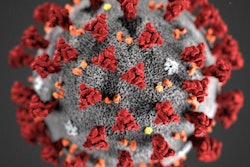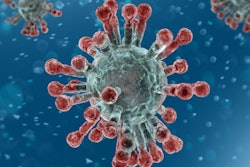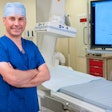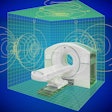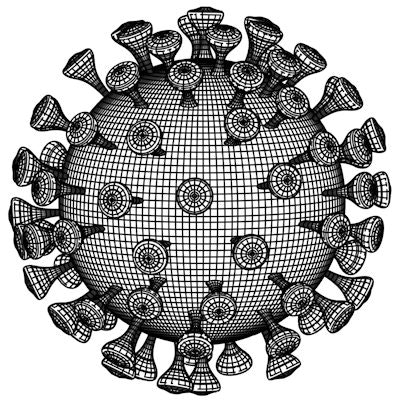
With at least 6,000 cases confirmed worldwide and 132 deaths, concerns over the latest coronavirus outbreak continue to escalate. Researchers from China report on the epidemiological and radiological characteristics of the novel virus and clinical outcomes of the first set of infected individuals in two studies that were published on 24 January in Lancet.
Coronaviruses are RNA viruses that are broadly distributed in humans and other mammals. Though most coronavirus infections are mild, the new betacoronavirus (2019-nCoV) appears to cause similar symptoms to severe acute respiratory syndrome (SARS) coronavirus and Middle East respiratory syndrome (MERS) coronavirus. Both SARS and MERS are known to trigger respiratory tract diseases and their outbreaks were collectively responsible for over a thousand deaths in the past two decades.
In a new study, researchers from several institutions in China examined the first 41 patients confirmed to be infected with 2019-nCoV and admitted to Jin Yin-tan Hospital in Wuhan between 16 December 2019 and 2 January 2020. They combined patient data from clinical records, laboratory tests, and CT exams in their assessment. The patients had a median age of 49, 66% had visited the Huanan seafood market in Wuhan, and more than two-thirds were otherwise healthy individuals.
Upon evaluating the data, the group found that the infected patients presented with a broad range of symptoms, including fever (98%), cough (76%), fatigue (44%), sputum production (28%), and diarrhea (3%). More than half of the patients developed shortness of breath roughly eight days from the onset of illness.
"Despite sharing some similar symptoms to SARS (e.g., fever, dry cough, shortness of breath), there are some important differences, such as the absence of upper respiratory tract symptoms (e.g., rhinorrhoea, sneezing, sore throat) and intestinal symptoms, such as diarrhea," senior author Dr. Bin Cao from Capital Medical University said in a statement.
The imaging findings also revealed that all of the patients had abnormalities evident on their chest CT scans indicative of pneumonia, with 98% of the cases showing bilateral involvement. Typical findings for patients transferred to the intensive care unit (ICU) were bilateral multiple lobular and subsegmental areas of consolidation. For non-ICU patients, the scans commonly showed bilateral ground-glass opacity and subsegmental areas of consolidation.
Furthermore, nearly 30% of patients developed acute respiratory distress syndrome. Six patients in the cohort died shortly after hospital admission, five had acute cardiac injury, and four required ventilation.
To prevent the 2019-nCoV outbreak from becoming a pandemic, the situation needs to be carefully monitored and the virus must be deeply studied, the authors noted. Reliable pathogen tests and differential diagnosis based on clinical description and imaging are crucial for clinicians during their first contact with suspected patients.
Person to person
An associated study also published in Lancet, led by Dr. Kwok-Yung Yuen from the University of Hong Kong-Shenzhen Hospital, investigated the way the coronavirus disseminated among a family that visited Wuhan from 29 December 2019 to 4 January 2020.
Of six family members who traveled to Wuhan, five were confirmed to have 2019-nCoV. None of them had visited the Huanan seafood market, and a separate family member who did not travel to the region was also infected, suggesting that the coronavirus is capable of spreading from person to person.
The most likely explanation for the family's infections is that one individual acquired the coronavirus while visiting a relative at the Wuhan hospital, then later transmitted it to the rest of her family, the authors said. One of the infected individuals had no clinical symptoms of disease, indicating that asymptomatic infected individuals may continue to spread the virus unwittingly.
"Because asymptomatic infection appears possible, controlling the epidemic will also rely on isolating patients, tracing and quarantining contacts as early as possible, educating the public on both food and personal hygiene, and ensuring healthcare workers comply with infection control," Yuen said in a statement.
All of the infected family members, except for the asymptomatic individual, presented with a combination of fever, upper or lower respiratory tract symptoms, and diarrhea three to six days after exposure. Chest CT scans showed ground-glass opacities in all of the patients, with more extensive radiological changes seen on the scans of the older patients (more than 60 years old).
The researchers have made publicly available the complete 2019-nCoV genome, which they identified from two clinical samples.
Gaps in understanding
2019-nCoV has also proved capable of remaining infectious in individuals during extended travel, with reports of the coronavirus having emerged in at least seven other countries. The U.S. Centers for Disease Control and Prevention (CDC) has confirmed two cases of coronavirus in the country among at least 63 patients currently under investigation.
In a linked commentary, representatives from the Chinese Academy of Medical Sciences, Chinese CDC, Oxford University clinical research unit in Vietnam, and University of Virginia School of Medicine underscored the importance of widespread awareness and improving current understanding of the coronavirus.
"To improve detection efficiency, front-line clinics, apart from local centers for disease control and prevention, should be armed with validated point-of-care diagnostic kits. .... Education campaigns should be launched to promote precautions for travelers, including frequent hand-washing, cough etiquette, and use of personal protection equipment (e.g., masks) when visiting public places," they wrote.
As there are no existing coronavirus antivirals or vaccines of proven efficacy in humans, a pressing need remains to develop best supportive care and a vaccine, they concluded. "Every effort should be given to understand and control the disease, and the time to act is now."




